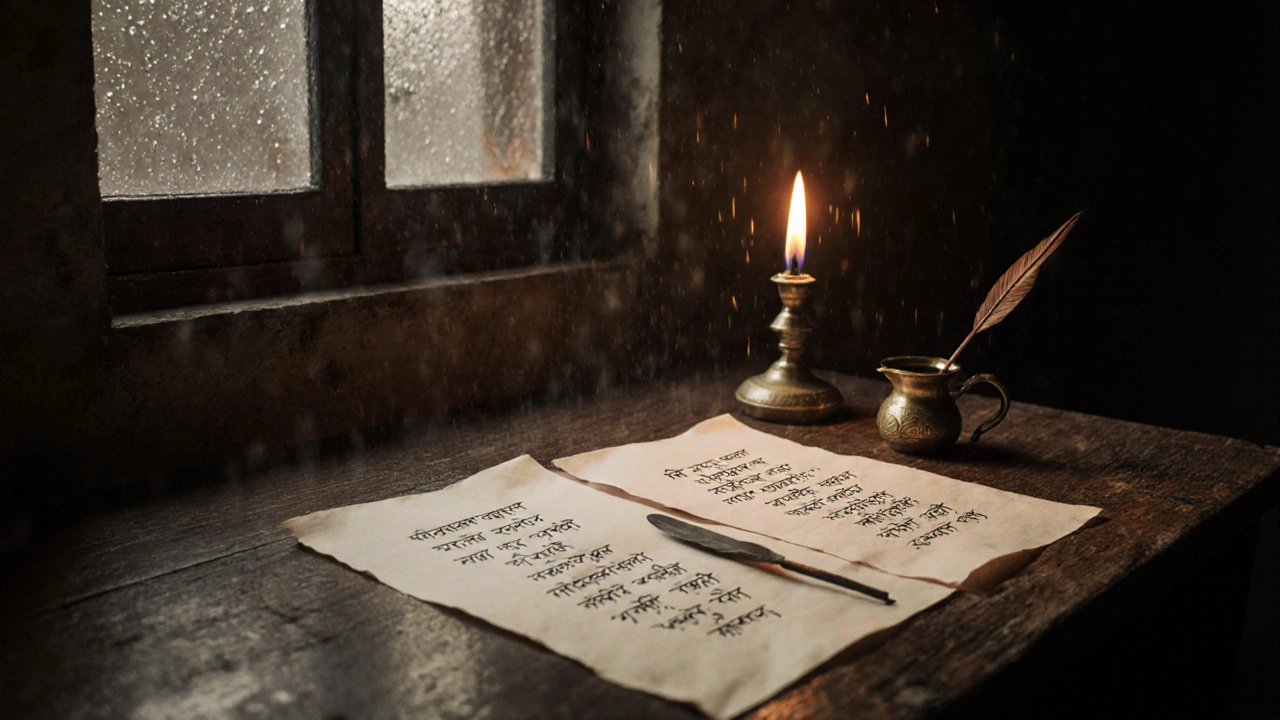Sad Poetry India: Heart‑Touching Poems and How to Write Them
If you’ve ever felt a tear rise while reading a poem, you know how powerful sad poetry can be. In India, those verses often mix personal loss with cultural images, making them feel both intimate and familiar. This guide shows why Indian sad poetry hits the mark and gives you easy steps to create your own emotional lines.
Why Sad Poetry Resonates in India
Indian writers grow up surrounded by stories of love, war, and spiritual quests. When a poem talks about heartbreak or sorrow, it instantly links to those big narratives. Readers recognize the references – a monsoon night, a distant temple bell, a mother’s lullaby – and feel the emotion more strongly. That cultural backdrop turns simple sadness into something deeper, almost like a shared memory.
Another reason is the openness of Indian languages to metaphor. A single word can carry layers of meaning, so a line about a wilted jasmine can suggest lost love, fading hopes, and even societal pressure at once. This richness lets sad poems stay with you long after you finish reading.
How to Write Your Own Sad Poem
Start with a feeling, not a story. Ask yourself, “What am I really hurting about?” It could be a breakup, a missed opportunity, or a quiet loneliness. Write that feeling in one sentence, then look for a concrete image that matches it – a cracked mug, a silent street, a cold tea.
Next, keep the language simple. Use everyday words that anyone can picture. Instead of “melancholy pervades my soul,” try “my heart feels heavy like rain on a roof.” Simple lines are easier to feel and remember.
Play with rhythm. Indian poetry often uses short, punchy lines or a gentle flow. Read your draft aloud; if a line feels stuck, trim a word or swap it for one that rolls off the tongue. The goal is a smooth beat that carries the emotion forward.
Finally, add a cultural touch. Mention a local scene – a tea stall, a temple courtyard, a monsoon storm. That tiny detail grounds the poem in India and makes the sadness more relatable to readers here.
Try this quick exercise: write three lines about a single lost object, like a missing watch. Focus on the feeling, use a simple image, and end with a line that hints at a larger story. You’ll see how a tiny scene can bloom into a full sad poem.
Sad poetry isn’t about being gloomy for its own sake. It’s a way to process pain, share it, and find comfort in knowing others feel the same. By using clear images, simple language, and a touch of Indian flavor, you can write verses that move hearts and stay with readers long after they close the page.
- Arjun Bhardwaj
- 24-10-25
- Sad Poetry
Names for Melancholy Poems - Indian Sad Poetry Terms
Discover the Indian names for melancholy poems-Udasi, Shok, Virah, Karuna-plus their meanings, history, and how to find each type.
Details- Arjun Bhardwaj
- 18-04-25
- Sad Poetry
Why Is Melancholy Addictive? The Pull of Sad Poetry in India
Why do people keep returning to sad poetry, even when life feels heavy enough? This article digs into the oddly comforting world of melancholy, showing how it draws people in—especially in India where poetry plays a big role in expressing feelings. We break down why sadness can feel safe and even addictive, and how famous poets tap into these emotions. You'll find surprising reasons behind our attraction to melancholy, plus practical tips for keeping your mood balanced when diving into sad poems.
Details- Arjun Bhardwaj
- 16-12-24
- Sad Poetry
Expressing Sorrow Through Poetic Indian Verses
The art of conveying sadness and melancholy in poetry is rich and nuanced, especially within the Indian context. This article explores various lyrical expressions that capture the essence of sorrow. Delving into cultural nuances and historical influences, it provides an inspiring guide on how poets can articulate sadness in a compelling way. It includes techniques, famous examples, and tips to pen down heart-touching verses.
Details- Arjun Bhardwaj
- 24-11-24
- Indian Literature
The Melancholic Poets of India: Unveiling Their Sad Poetry
Explore the profound world of melancholic poetry in India, shedding light on poets whose works mirror sorrow and introspection. This article delves into the essence of sadness in Indian poetry, highlighting those who are pivotal in this evocative genre. Discover the cultural significance and emotional depth of their works, while also offering insights into what defines them as melancholic. Uncover the beauty hidden within their sorrowful verses.
Details


